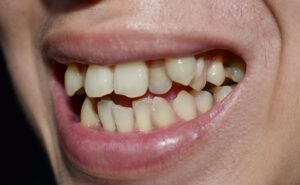Why the aperture mode is the best to work with

Your camera, whether a DSLR, mirrorless, or even an SLR camera, comes with a few priority modes and a full manual mode. Among these modes is the Aperture priority mode. As the name suggests, the Aperture priority mode allows you to set the Aperture you want for a shot. The camera decides to dial in the resulting Shutter speed.
Aperture priority mode is a very poplar shooting mode and is often used in various shooting genres and situations. Now, you could probably ask at this juncture why it is that aperture priority is a preferred mode to the other available modes. And that would be an excellent question to ask. But before I answer that question, let’s find out what the different modes are –
- Shutter priority mode
- Manual mode
- Auto exposure mode
- Auto ISO mode
Auto exposure mode
First, let’s talk about the auto-exposure mode. This is the green mode, as I sometimes refer to it because this mode is used by newbies mostly. In this mode, the camera is in charge of determining the aperture and shutter speed to use. There are several disadvantages of this mode, but the one in chief is what makes the auto mode unusable for someone like me, and that’s there is no creative control over the exposure.
Auto ISO mode
Auto ISO is useful when working with one of the priorities or the manual modes. In this, you determine the shutter speed and the Aperture, and the camera decides the ISO depending on the ambient light and the exposure settings you’ve selected. This mode is ideally suitable when you have a fixed shutter speed and aperture value that you wish to shoot in for the right composition. The ISO is the only other parameter that can be tweaked to balance the exposure. The ISO balances out the exposure allowing you to choose the right exposure value (a combination of shutter speed and Aperture).
Manual mode
The manual mode is by far the most powerful mode on your camera. That said, it’s also a mode that can slow you down considerably—the reason being in manual mode, you’ve to control and set all of the camera settings manually. In a fast-moving setup, especially when you’re shooting wildlife or sports photography, you don’t have the time to look at each parameter and then set up the settings manually.
Shutter priority mode
In shutter priority mode, the camera decides the shutter speed, and you decide the Aperture. This is the reverse of the Aperture priority mode. This mode works to your advantage when you know what shutter speed you can shoot, but the Aperture does not matter. The problem with this mode is that you’ve to guess what shutter speed is ideally correct for the shot while the camera decides the aperture value, and that’s never an easy thing to do. This is because sometimes when you think that a shutter speed of 1/1000 is what you need at ISO 400, the required Aperture may be f/2.8. But if you’re using an f/4 lens, you wouldn’t be able to shoot with that Aperture.
Aperture priority
With aperture priority, you can select the Aperture that you’re comfortable with (depth of field), compose the shot, and finally choose Auto ISO to ensure that the camera shutter speed does not drop below a point. The camera then dials the shutter speed while ensuring that the lowest threshold isn’t crossed and triggers the exposure.
Photographers! Sell your images on www.planetstockphoto.com.








